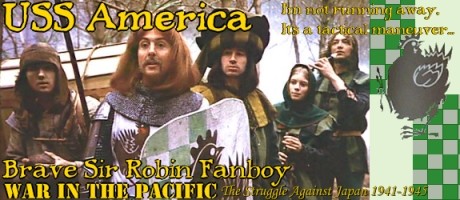Apollo11
Posts: 24082
Joined: 6/7/2001
From: Zagreb, Croatia
Status: offline

|
Hi all,
quote:
ORIGINAL: AW1Steve
quote:
ORIGINAL: Apollo11
quote:
ORIGINAL: AW1Steve
quote:
ORIGINAL: JWE
quote:
ORIGINAL: Apollo11
quote:
ORIGINAL: bobogoboom
quote:
ORIGINAL: Apollo11
quote:
ORIGINAL: JWE
quote:
ORIGINAL: Apollo11
Interesting link...
Interim report on the accident on 1st June 2009 to the Airbus A330-203 registered F-GZCP operated by Air France flight AF 447 Rio de Janeiro – Paris
http://www.bea.aero/docspa/2009/f-cp090601e1.en/pdf/f-cp090601e1.en.pdf
Yeah, "visual examination showed that the airplane was not destroyed in flight; it appears to have struck the surface of the sea in a straight line with high vertical acceleration." From altitude, that would take some time; time enough for most to realize what was going to happen.
Damn ... what a tragedy.
Yes... that's the most important info from the document... they deducted it from the compression of parts they discovered... also interesing info about automacic messages...
Great tragedy... 
hopefully they were all out by this time. i think they are going to have trouble piecing together what happened unless they can find the black boxes.
Few questions for Martin and the rest of you guys...
Why modern civilian aircraft still only rely on pitot tubes for speed readings (IAS, TAS)?
Was there any civilian aircraft that used radar as a tool to meassure speed over surface?
Why aren't modern GPS devices used as (backup) speed indicators in civilian aircraft?
Speed in the air has to be measured relative to the conditions where you are at. Speed over ground is ok, but if you are flying against a 100 kt headwind, SOG don't help much. Thus GPS or inertial systems just help determine location, not VMG.
Conditions within your bubble change minute by minute. You need something that gives an "in bubble" referant. For airplanes, it's an integral pitot. We got the same kind of thing for sailboats; gotta think local, not global.
Absolutely true. To which I might add , what makes you think RADAR is all that accurate? Inertial? Both systems measye errors in +/- miles! GPS? Only as good as the computer that makes the calculations. There is a very effective check for a problem with the pitot tube. Another pitot tube! As with all things in aviation, Redundancy is life! The aircraft I used to ride in had 4. (One for each pilot, one for the aircraft and one for the navigator). And you never use just one inertial (you have two or more checking each other). The pitot is the oldest, and yet most reliable system going. Just because somethings old, doesn't mean it's not reliable (or some would say the best). Another example is the compass. We have Gyro, and the old fashion magnetic. Every aircraft has them (and most boats too). And they still work (assuming the user properly compensates for and uses it). 
Steve, I know all that... but as a redundancy secondary check why not have radar altimeter / radar speed over surface or even GPS check?
IIRC there were several big civilian aviation disasters due to discrepancy of readouts from several pitot tubes and static ports on single aircraft (thus having several pitot tubes and static ports on same aircraft is not always 100% assurance of safety)...
They do Leo. Most aircraft do have Radar altimeters and GPS. What I'm saying is that they are not used for speed calculation because they generally don't work (in aircraft) to the degree necessary. Every RADAR has what is called a minimum range. (I really don't want to dig out my old text books for the formuli, but will if you want). RADAR is measured by the time it takes a pulse to strike an object and return. The size and shape of the pulse determines the range and accurracy of the pulse. Long range has long pulses, short , short pulses (there are several other factors, but I'm simplying). So a RADAR for measuring speed needs to be high powered,very short pulsed and very short ranged. Long ranged means long pulsed, for long range. The problem with longer pulses is that it "overlaps", that is to say that at shorter ranges, the pulse is larger than the target and doesn't have time to reflect and return , leaving a "dead area". We refer to this as "minimum range". A long range search RADAR for example , has a very long pulse, and a huge "dead area" inside its minimum range. (again , I don't have the formulars, but let's say a 200NM search area might have a minimum range of 5-8 miles where you would get no blips , or lose a contact). An ultra short range police RADAR gun (which has more in common with a timing light than a modern RADAR) has an Ultra short pulse, almost no blind spot and a range of a little over 1/2 a mile! The problem with using RADAR for speed in an aircraft would mean you'd need a bunch of RADARs to cover the gaps in minimum range , and a computer system to co-ordinate them. It hasn't been necessary to go to that expense (not to mention carrying all that weight) to try an equal a pitot system.
With recent technology developments in phased array and cellular Radars , what you suggest may soon be possible, and more important , practical. But aircraft systems today were on the drawing boards 20 years ago.
I'll let some one more knowledgable than me do the details on GPS for now. I greatly need a second cup of coffee! 
Thanks Steve!
BTW, I was thinking of very ordinary radar that could only meassure the pulse shift (i.e. it would be doppler radar)... it only needs to be poinbting downwards towards surface... the speed could be easily calculated using the amount of shifted phase...
Leo "Apollo11"
_____________________________
 Prior Preparation & Planning Prevents Pathetically Poor Performance! A & B: WitW, WitE, WbtS, GGWaW, GGWaW2-AWD, HttR, CotA, BftB, CF P: UV, WitP, WitP-AE
|
 Printable Version
Printable Version































 New Messages
New Messages No New Messages
No New Messages Hot Topic w/ New Messages
Hot Topic w/ New Messages Hot Topic w/o New Messages
Hot Topic w/o New Messages Locked w/ New Messages
Locked w/ New Messages Locked w/o New Messages
Locked w/o New Messages Post New Thread
Post New Thread